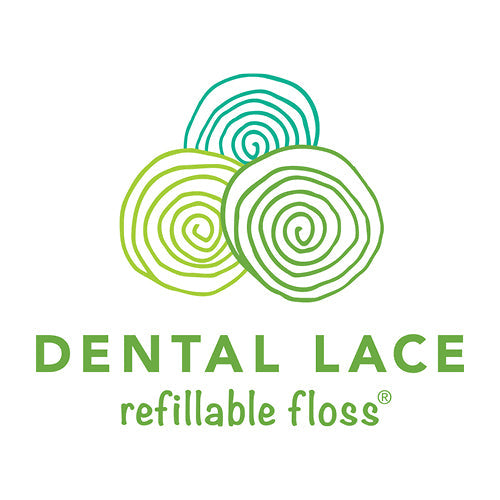
Why Flossing Is Essential While Wearing Braces?
You have invested not only financially in getting braces but also dedicated your time and energy to treating your misaligned teeth. So why not follow the best oral practices in preserving its health? Flossing and brushing your teeth regularly can step up your oral hygiene game. It keeps your gum healthy and cavities at arm’s length. For individuals with braces, it becomes difficult to floss a littlelonger as they have to floss through every bracket. But, remember, a little extra work can go a long way and prevent all gum diseases.
Here’s what you need to know about flossing with braces and why it is so important to do it regularly!
The Importance of Flossing With Braces
Maintaining oral hygiene becomes extra challenging when you have braces on. But it’s a practice that requires practice and time to perform every day. Here’s why you should not ignore flossing your teeth.
Prevent Damage to Your Braces
Traditional metal braces use wires and brackets to put pressure on teeth for alignment. Hence, there are high chances of food particles getting trapped in between them. As they continue to accumulate, it can lead to damage and make braces less effective. Flossing will help in removing the food debris and plaque
that builds up around the wire and brackets.
Prevent Tooth Decay
When food particles linger around the braces, they can foster bacteria growth, which produces acids that erode tooth enamel. Regular flossing helps eliminate these particles, thereby reducing the risk of cavities and preserving the integrity of your teeth.
Avoid Gum Diseases
Braces create more nooks and crannies where plaque can hide and harden into tartar. This can lead to gum inflammation and periodontal disease. Flossing reaches the areas your toothbrush can't, Removing plaque and keeping your gums healthy.
How to Floss With Braces On?
Now that we have understood why you must floss every day, let us learn how to effectively floss with braces. Here are step-by-step instructions for you. Step-by-Step Instructions
1. Collect Supplies
There are various types of floss available. From waxed dental floss to a floss threader, you can try the one that brings you the utmost comfort. Many orthodontists also design custom floss for braces.
2. Prepare the floss.
Cut the dental floss about 18 inches long. Now, if you are using a floss threader, then insert the floss inside the threader’s loop.
3. Thread the floss
Stand in front of the mirror. Carefully thread the floss through the space of the main wire and teeth. Be gentle. This may require some patience to avoid tearing on the brackets.
4. Position the floss
Once the floss is behind the wire, then slide it between your teeth. The trick is to move the floss up and down along both sides of the teeth and not just in and out.
5. Clean the gum line.
Slowly curve the floss into a C shape around the tooth and gently move it under and along the gum line to remove the trapped debris.
6. Repeat The Floss
Once you have completed one set of teeth, remove the floss. Re-thread and continue the process for each tooth until all the areas are thoroughly cleaned.
7. Rinse
After flossing all the teeth, rinse your mouth with water or any antibacterial mouthwash suggested by your dentist. This will remove dislodged particles.
Flossing Options for Braces
We are aware of the importance of braces and how you can follow a structured approach in flossing the teeth. Now let us understand how you can achieve healthier teeth using different flossing techniques.
Traditional string floss
Traditional floss is a tried-and-true method for cleaning between the teeth. There are waxed and unwaxed floss. The former glides in very smoothly without much effort, and the latter one will be tricky to maneuver around the braces and wires.
Waterpik
A Waterpik or water flosser will use a thin stream of water aimed at your teeth. It will remove the tiny particles and plaque from between the teeth and around the braces. One of the best things about water flossers is there is no risk of gum bleeding. It's a convenient way for those who find string floss to be a tedious task.
Floss Threader
The floss threader requires you to insert the floss into the small loop and then use it between your teeth and under the braces. It is reusable and lasts longer.
Dental Tape
Last but not least, dental tape is broader and flatter in comparison to traditional floss. It’s waxed and made from nylon. All you need is to gently push the tape between the tooth spaces and continue removing the plaque.
Apart from the above-mentioned flossing methods, you can consult your orthodontist to seek the correct flossing method. Many individuals also opt for interdental brushes, which have soft bristles to remove the food from in between the wires.
Final Thoughts
Braces can bring in confidence in you by straightening your teeth. They also reduce the chances of getting dental health problems shortly. Hence, it becomes utmost crucial to take care of your teeth while having braces. Brushing and flossing can help you remove the bacteria and shield enamel. We understand how flossing can be time-consuming with braces. But do not skip. Choose the methods that are easier for you. Years later, you will thank yourself for taking care of your teeth with braces.
Author Bio:
Dr. Satish Pai is an orthodontist and Ivy League-trained dentist who has served as a faculty at Columbia University. He believes a perfect smile makes a person look great and feel great. As the founder of Putnam Orthodontics and a Partner at Brite Orthodontics, He is dedicated to providing the best orthodontic treatments to his patients. He also writes to educate people about orthodontics, the importance of correctly aligned teeth, and good oral health. In his free time, you can find him golfing, doing yoga or surfing, and spending time with his family.




